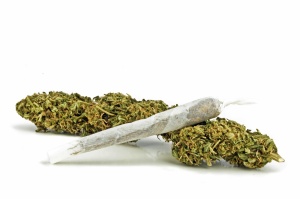Marijuana addiction is a major topic of controversy regarding the legitimacy of its healing properties and therefore being used as a prescribed medicine. Additionally, it is another main subject of discussion concerning legalizing marijuana altogether for recreational purposes. The states of Washington, Nevada, California and Colorado recently made it legal to adults for such a reason. It is too soon to tell if this decision was healthy and fully thought out; having no negative ramifications.
Marijuana is derived from a natural plant (cannabis sativa) that is cultivated both indoors and out. Due to marijuana’s ability to be harvested indoors, marijuana can be grown just about anywhere in the world. As far as outdoors is concerned; marijuana is a weed and therefore does best in dry desert climates such as Asia, Mexico, Afghanistan, etc. Since it is used medicinally and recreationally as of late, it can be found in many forms such as: candy, suckers, in food items, and in various drinks, etc.
THC is the active chemical ingredient that actually produces the psychoactive “high” (induced relaxation/calmness, fantasy/dreaminess, giddiness and euphoria) one can expect to have upon taking it into their system. The most popular way to extract the chemical THC (Delta-9-Tetrahydrocannabinol) found in marijuana is through smoking the dried out buds found throughout the plant stems. THC is hydrophobic (will not mix with water) so once it reaches the brain it naturally binds with all things fatty and therefore clings to the neurotransmitters. This is how the euphoric feelings are originally created, however after chronic use of marijuana the THC effects the brain’s hippocampus functioning of both memory and learning capacity. The neurotransmitters are literally plugged or blocked off with THC resin which affects perception, motor coordination, reasoning, and reaction functions. This is why the marijuana user will appear to be mellow and slowed down for the most part. Their brain is truly clouded and struggling to make the proper synapses in real time within their neurotransmitters.
Heavy use of marijuana addiction can take 15 months or longer to reverse the effects it has on brain functions. Marijuana addicts can expect traces of use on a urine analysis (UA) test for weeks upon initial use. One of the issues marijuana addicts face is they justify their continued use claiming there are no negative side-effects in their lives. One of the dangers associated with marijuana smoking is the carcinogenic properties it contains. Marijuana deposits four (4) times the amount of tar in a users lungs in comparison to a cigarette. If you smoke both tobacco and marijuana daily, you significantly increase your risk for lung disease and/or cancer. Up to date there has been no documentation or proof of overdose from marijuana addiction consumption. The only way this could occur is if the user consumed an inordinate amount which is not humanly possible or if the marijuana was laced with a different chemical/substance.



